Interview with Prof. Carlos Rodriguez-Galindo, By the Editor-in-Chief of OncoDaily, Prof. Gevorg Tamamyan
“I was born in a relatively small town in Spain.”
It was a cold, clear winter morning in Memphis. The kind that wakes you up the moment you step outside.
Inside the St. Jude Global Convention, the air buzzed with excitement. Doctors. Researchers. Nurses. The brightest minds in pediatric oncology, all in one place, sharing breakthroughs and ideas, pushing the fight against childhood cancer forward.
And one man stood at the epicenter of it all: Dr. Carlos Rodriguez-Galindo, Executive Vice President and Chair of the Department of Global Pediatric Medicine, and Director of St. Jude Global at St. Jude Children’s Research Hospital.
The titles didn’t matter. What mattered was the mission—to cure children with cancer.
Dr. Rodriguez-Galindo sits comfortably, recounting a life shaped by humility, service, and deep familial roots. His story begins in a modest Spanish town, where his father, a family physician, and his mother, a pharmacist, lived lives of purpose and dedication.
“My father was a family physician, my mother a pharmacist. I grew up in a really humble environment, with parents who nurtured us with love and respect,” he begins.
It is clear from his tone that these early years set the foundation for who he would become. Rodriguez-Galindo watched his father serve the families in their community with unwavering dedication, often without compensation. “There were no resources where I grew up,” he says, “but I saw my father’s vocation for medicine as almost like a priesthood. That full dedication without expecting anything — that stayed with me.”
His uncles, too, were doctors. “They worked in small towns, just like my father,” he explains. “From them, I learned that medicine is service — it is a gift. The unique gift that we, as physicians of any specialty, have to be able to heal and to work with people. That, to me, was what inspired me to become a doctor.”
The boy who quietly observed his father’s sacrifices decided to follow in his footsteps. “I grew up just trying to emulate what my father was. I went to medical school with that in mind, to residency with that in mind. I wanted to be a family physician like him.”
But as he would soon discover, life often leads us to unexpected places.
“I discovered the world of children with cancer, and that changed me completely.”
Dr. Rodriguez-Galindo’s path to pediatric oncology was not preordained. “Initially, I wanted to be a pediatrician,” he admits. “That was the plan. But during my advanced pediatrics training, I discovered something that changed me completely: the world of children with cancer.”
He pauses for a moment, and his voice softens. “I was inspired by the children first. And by their families. Seeing their resilience, seeing the journey that these children and their families were starting — I felt like it would be an honor for me to be part of that journey.”
It wasn’t just the patients who moved him; it was also the doctors. “I looked at the physicians caring for these children, and I thought, ‘Could I be one of them?’ I saw their commitment, their skill, and I realized, yes, this is who I want to be — a pediatric oncologist.”
For Carlos Rodriguez-Galindo, science came third. “I did not come to pediatric oncology for the science,” he says plainly. “I came for the patients. For the profession around them. The doctors, the nurses, the entire care team — that is what drew me in.”
But the science soon became essential. It gave him the tools to save lives. “I started my journey to become the best pediatric oncologist I could be,” he says. “But I never forgot my origins. At heart, I am still a family physician. I think about the patient, about the family, and about how I can give them the gift of life. That’s what I try to do.”
At St. Jude, where patients are often referred to as the “North Star,” Rodriguez-Galindo sees a reflection of his roots. “We talk a lot here about the patients being our North Star. That’s something I’ve never forgotten. I learned that growing up. I learned that as a trainee. It is the core of who I am.”
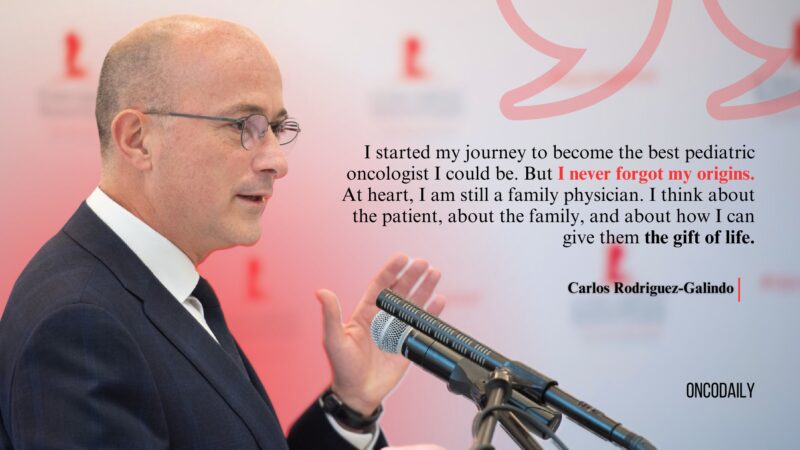
“Then You Are Leaving Beautiful Barcelona and Coming to the USA”
Carlos Rodriguez-Galindo was at a crossroads.
“Yes. I wanted to be a pediatric oncologist,” he says matter-of-factly. “But in Spain, there were no pediatric oncology training programs. This was the late 80s, early 90s. The healthcare system was in crisis, and there were no opportunities to stay and train.”
Faced with the realities of the time, Dr. Rodriguez-Galindo looked outward, determined to chase his dream. “I thought, okay, I’ll train abroad and come back to Spain to work. I looked at programs in Europe and in the United States. But then I came across St. Jude Children’s Research Hospital. I started reading papers about pediatric oncology, and so many of them were from St. Jude. I didn’t even know what it was, but I thought: This is what I want to be.”
He pauses. “I came here for just one year of training. And then, of course, I never went back.”
Dr. Rodriguez-Galindo stayed for his full training at St. Jude and, despite attempts to return to Spain, his path kept him in the United States. “Eventually, my career just kept me here. This was where I was meant to be.”
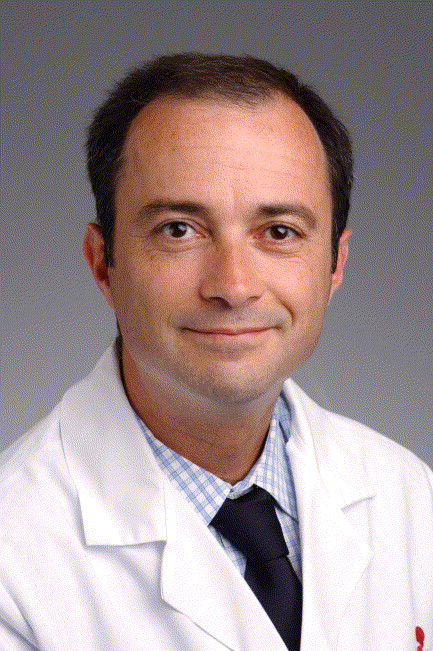
Photo from the American Journal of Ophthalmology. 2003
“From Memphis to Boston: Life is About Challenges”
Dr. Rodriguez-Galindo’s time at St. Jude was transformative. “I trained here in Memphis for a number of years and then stayed on as faculty,” he recalls. His area of focus? “As a pediatric oncologist, I took care of children with solid tumors. My area of research was in sarcomas and rare malignancies. I developed protocols, new therapies. That was my work, and I was the happiest man in the world doing it.”
But it wasn’t just research that captured his attention. “At the time, St. Jude had started what was called the International Outreach Program, partnering with institutions in Central America and the Middle East. I speak Spanish, so I started helping. When doctors came to Memphis for training, I would host them. Memphis isn’t the kind of place where you can be independent if you’re visiting. There’s no public transportation, no way to get around. So I became their guide, their friend.”
He smiles, thinking back. “Many of those doctors were my age. Today, they’re leaders of programs all over the world, but we all started together.”
It was through these friendships that Carlos Rodriguez-Galindo began to understand the scale of the challenge. “I realized the difficulties they faced in their countries. I thought, How can I help? If I’m developing treatments for sarcomas or retinoblastoma, how can I adapt them? How can I share these treatments so they can be used elsewhere?”
The desire to expand his work beyond St. Jude’s walls grew stronger. “It’s something we say all the time: If we want to cure childhood cancer as a concept, we need to cure children with cancer. That’s very different. One is theoretical. The other is practical.”
At this point in his career, an opportunity arose: a leadership role at Dana-Farber/Boston Children’s Cancer and Blood Disorders Center.
“It was very difficult to leave St. Jude,” he admits. “This was my home. I was the happiest man in the world here. But life is about challenges. It’s about pushing yourself outside of your comfort zone to see what you’re made of.”
For Carlos Rodriguez-Galindo, going to Boston represented more than a career move; it was about honoring his younger self. “When I was a child studying medicine, the names I read about came from Harvard Medical School, from Boston Children’s Hospital. I thought, Wouldn’t it be beautiful to be part of that? So I said to myself: Carlos, you need to challenge yourself. As the son of a family physician in a small town in Spain, can you honor that child who wanted to explore medicine, who wanted to be the best doctor he could be?
“I said, okay. Let’s go to Boston. Let’s challenge myself and see what I can do.”
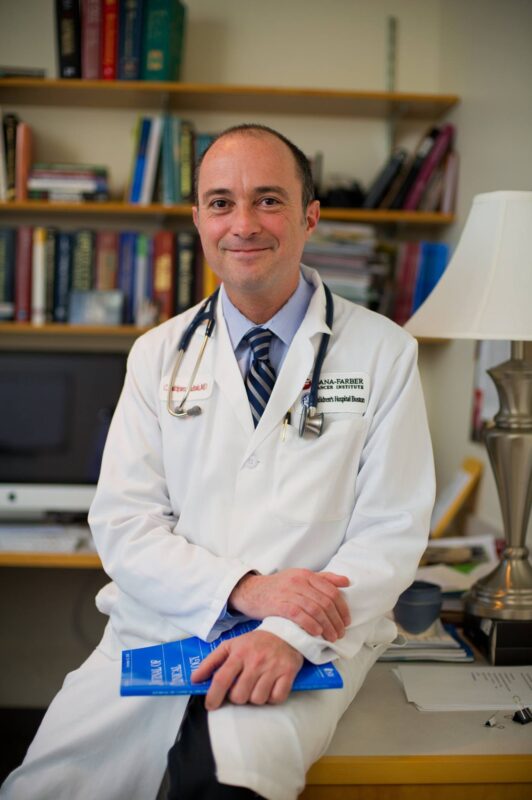
Photo from the Boston Children’s Hospital. Facebook. 2015
“Global Health: Not About Curing Childhood Cancer, but Curing Children”
Dr. Rodriguez-Galindo describes his years in Boston as “beautiful.” He was part of Harvard Medical School and served as the Director of the Solid Tumor Program and the Clinical and Translational Research Program. “Not everyone can say they’re a professor of pediatrics at Harvard Medical School. That was a beautiful story for me.”
But Boston, like St. Jude, reminded him of the importance of global health. “My experience had taught me that it’s not about curing childhood cancer. It’s about curing children with cancer. That perspective stuck with me.
“At Boston, we started what we called the Global Health Initiative. We began modestly, developing partnerships and programs. It made me think about global health more academically. Philanthropy is essential, but so is academia. Combining the two is how we advance. That’s the St. Jude model.”
Dr. Rodriguez-Galindo could have remained in Boston, living a prestigious academic life. “Being a professor of pediatrics at Harvard — for many, that’s the pinnacle. You can end your career there, and that’s fine. But then…” He pauses, recalling a pivotal moment.
“The Next Frontier is Global”
The turning point came during a conversation with Dr. James Downing, then the Scientific Director of St. Jude. “He was about to become the next president and CEO. We talked about the future of global health at St. Jude. Should we keep it? Grow it? Change it?”
At the time, the field was obsessed with genomics, immunotherapy, and cell therapy. But Dr. Rodriguez-Galindo offered a different perspective. “I told Dr. Downing: None of those are the next frontier. The next frontier is global. If we can make the treatments we develop benefit all children, everywhere — that’s the real challenge.”
Dr. Downing listened. A year later, on his first day as CEO, he reached out. “Carlos, I want to follow up on that conversation,” he wrote.
For Carlos Rodriguez-Galindo, it was the call of a lifetime. “If St. Jude was serious about this, I knew I couldn’t let it pass. This was my dream job. The challenge of my life.”
But he had doubts. “I am a pediatric oncologist. I’m not a public health expert. I don’t have a master’s degree in administration. I’m just a doctor. But I thought, let’s build from that: the child with cancer. What can we build on top of that?”
It wasn’t easy. “We started with a philanthropic humanitarian program. It was incredibly successful, but it wasn’t enough. How do you scale that up? How do you not disappoint anyone?”
The answer, for Dr. Rodriguez-Galindo, was to dream big but act methodically. “We said: think big, think big, think big. But put the practice. A dream without an action plan is a nightmare.”
St. Jude Global was born.
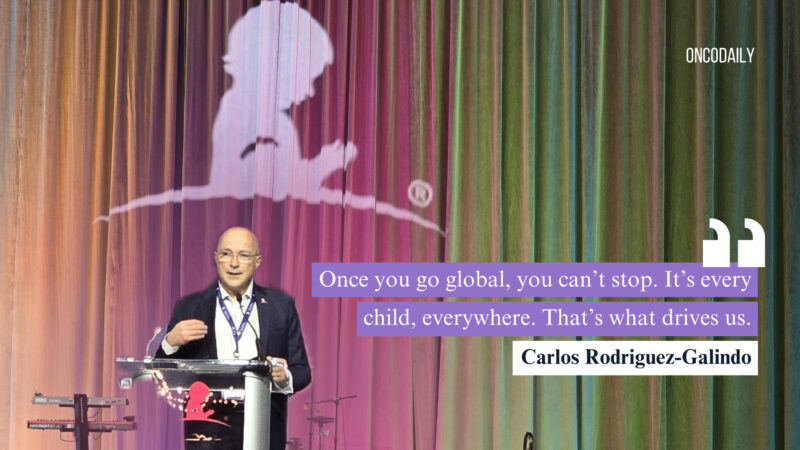
“It’s Every Child, Everywhere”
Today, St. Jude Global is a model of innovation and collaboration. “We started with 23 people. Today, there are 200 employees, with hundreds of partners around the world. But it’s still about the same thing: the patients. The providers. The families.”
The scale of the work doesn’t faze him. “Once you go global, you can’t stop. It’s every child, everywhere. That’s what drives us.”
“What’s Your Vision for the Next 10 Years?”
Carlos Rodriguez-Galindo’s vision is as ambitious as it is urgent. For him, the fight against childhood cancer has moved beyond clinics and hospitals. It is a global movement requiring systemic change, partnerships, and innovation.
“We work as a hospital, and we work with hospitals,” he begins. “We are where the patients are.” In the early days, St. Jude Global began by helping other hospitals improve their practices, working hospital to hospital. But Dr. Rodriguez-Galindo soon realized that this was not enough.
“There are so many layers to this, especially at the country level,” he explains. The real turning point came when St. Jude partnered with the World Health Organization (WHO). “WHO has this normative role. They can engage with governments and decision-makers, and they can generate a global movement. That was a game-changer for us.”
The WHO’s Global Initiative for Childhood Cancer, launched with St. Jude’s collaboration, has already begun to create systemic change. But Dr. Rodriguez-Galindo is clear: “To accelerate this, to make it more than just a movement, we need to put everything underneath it. All the practices. All the frameworks. And that is what St. Jude felt we needed to do.”
“Combining Top-Down and Bottom-Up Approaches”
The plan is twofold. “From the top down, WHO generates the global momentum, engaging governments and policymakers. From the bottom up, St. Jude works with hospitals, foundations, and networks to fill in the gaps,” Dr. Rodriguez-Galindo explains.
The approach is comprehensive. “We work on everything from national cancer control plans to educational programs. We help hospitals with practice-changing initiatives, with protocols that improve outcomes for children with cancer.”
But Dr. Rodriguez-Galindo’s vision for the next decade is even bolder.
“If you ask me what I see 10 years from now, I believe there is a need to create a body dedicated solely to children with catastrophic diseases,” he says. He envisions an agency that combines the best elements of WHO, UNICEF, and philanthropic organizations like the Gates Foundation. “It would act as both a normative agency and a practical implementation partner — working with governments, hospitals, academic institutions, and foundations.”
Such a body would ensure that every child with cancer, sickle cell disease, hemophilia, or other catastrophic conditions is supported. “The patients, the families, and the providers should never feel alone,” he says firmly. “That’s the goal. Whether it is St. Jude leading this, or simply creating the model, it has to happen.”
“We Need to Behave Like a Global Agency”
Dr. Rodriguez-Galindo knows that transforming vision into reality requires action and accountability.
“What I tell my team is this: If we think there’s a need for something like this, we need to start behaving like it now. We need to start acting as if we are that global agency, even if we’re not.”
This is not about arrogance, he stresses. “It’s about identifying the elements that are needed. It’s about knowing what interventions we must develop, what responses we need to provide to stakeholders. Only then can we move forward.”
At the heart of this vision lies a powerful concept: access. Dr. Rodriguez-Galindo speaks passionately about a global platform for access to medicines.
“We are building this platform now, and it will grow. It won’t just be for children with cancer. We can use it for children with hemophilia, for sickle cell disease, for other catastrophic conditions. Imagine this: as new therapies like CAR T cells or gene therapy become available, this platform could provide access to every child who needs it.”
He doesn’t stop there.
“We are also working on diagnostics,” he says, describing a project called DIVIA. “With cloud computing and genomic medicine, we are trying to ensure that a child in Tanzania has the same quality of diagnosis as a child in Boston. Within 48 hours. That’s the goal.”
To achieve this, Dr. Rodriguez-Galindo believes, the world needs a structure capable of innovation and dissemination. “You need a big structure to do these things. That’s where I think agencies like the one we envision could play a role.”
“How Big is St. Jude Global Now?”
When Dr. Rodriguez-Galindo took on this role in 2016, St. Jude Global was small but impactful. “We started with about 22 or 23 people,” he says. “Today, we have about 200 employees reporting to Memphis, and we work with another 100-plus contractors around the world.”
But the structure is evolving. “We are moving to a regional hub model now. That means staff will be located closer to where the problems are, where the patients are, where the needs are most urgent. We need to be closer to the communities we serve.”
The scale of the work reflects the magnitude of the problem. For Dr. Rodriguez-Galindo, the task is clear: to dream big and execute flawlessly. “You cannot look at this and say, ‘These are the resources we have, so this is all we can do.’ No. Once you get global, you have to be global. Every child, everywhere. That is the responsibility.”
He acknowledges that the challenge is immense. “At the beginning, someone asked me, ‘If I give you all the money you need, what would you do?’ And I said: First, get the right people.”
That investment in people has been the cornerstone of St. Jude Global’s success.
“We invested a lot in building the right team at the beginning. The smartest people in the world to help us figure this out. Because this isn’t something you can do alone.”
“The Path Forward: Innovation, Partnerships, and Purpose”
Dr. Rodriguez-Galindo’s 10-year vision is a bold roadmap for the future. It is a vision that integrates science, policy, and humanity.
“We need to keep innovating,” he emphasizes. “We need to build platforms for access to medicine, for diagnostics, for new therapies. We need to make sure that no child, anywhere in the world, is left behind.”
But beyond the systems, beyond the innovation, lies something deeper. “At the end of the day, this is about the patients. The families. The providers. That is who we serve. That is who we fight for.”
For Rodriguez-Galindo, the future is clear. It is global. It is collaborative. And it is possible.
“Going Till the End: Conquering Pediatric Cancer Globally”
When asked if his approach to treating pediatric oncology patients mirrors his philosophy for conquering global pediatric cancer—pushing until the very end—Carlos Rodriguez-Galindo pauses thoughtfully.
“You know, I think there are many angles to this,” he begins. “Our focus is the child with a catastrophic disease. A child with cancer. But that child is part of a much larger context—a healthcare system, policies, government priorities, and societal realities. You cannot isolate their treatment from that.”
Rodriguez-Galindo explains that this delicate balance requires more than clinical expertise. It demands humility, patience, and strategic partnerships.
“Obviously, we push. We push for action, for funding, for structures that will advance care for these children. But we also cannot push beyond what a system can tolerate,” he says. “We advocate fiercely for these children, but we also help governments and hospitals make the right decisions—decisions that are sustainable for their patients and populations.”
He emphasizes that change must be collaborative. “We never work in isolation. Never. We don’t walk into a hospital or a country and act independently of the authorities or local systems. That’s not how change happens. We work with governments, with local leaders, with healthcare providers. You must engage all the stakeholders.”
This is the cornerstone of Dr. Rodriguez-Galindo’s philosophy: the need to strike a delicate balance between pushing forward and pausing when necessary.
“We accelerate what we can accelerate. We pause where we need to pause. And we always do it together, never against a system,” he says firmly. “It’s a dialogue. It’s a partnership. It’s about building systems that last.”
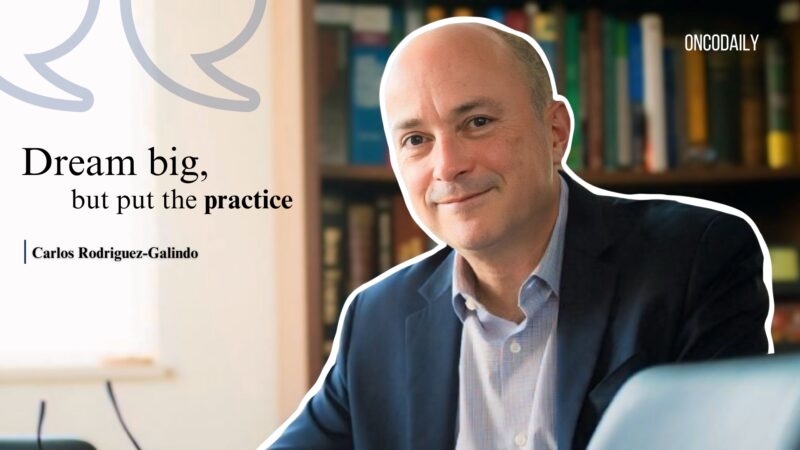
“The Man Who Read It All”
A story from his earlier days speaks volumes about Carlos Rodriguez-Galindo’s dedication to his craft. When he was preparing to leave for a new role, he released his personal library, allowing colleagues and mentees to take a book with them. Among the anecdotes that emerged that day, one stood out. Someone noted that Dr. Rodriguez-Galindo had read Nathan and Oski’s Hematology of Infancy and Childhood from cover to cover— all two massive volumes.
He laughs at the memory. “It’s true. Nathan and Oski was two huge volumes. I read it from the first page to the last one. Every word,” he says, his voice filled with a mix of pride and nostalgia.
“I underlined, I marked passages, I reflected. Back then, that was how I learned. I absorbed the knowledge of others through books, through reflection. That’s how I understood my role as a doctor and as a scientist.”
The textbook itself, a definitive resource on pediatric hematology and oncology, spans over 2,000 pages. But for Rodriguez-Galindo, it was a labor of love.
“I had a good photographic memory, too,” he adds with a grin. “I could remember where a chapter was, what page a particular problem was on. I loved that. It was how I learned.”
Today, his time to read has been overtaken by the demands of global leadership and clinical work. “Now I don’t have the luxury of reading a whole textbook,” he admits. “But I did that then. And I loved it.”
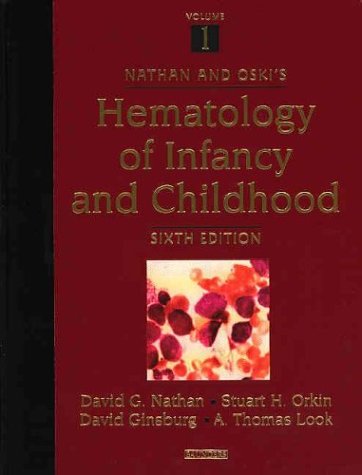
“The Best Moment of the Week”
“Do I miss the clinic? Very much,” Carlos Rodriguez-Galindo admits without hesitation. “I still see patients. I’m still a practicing physician. It’s not as much as I used to—maybe half a day a week—but I refuse to let that half-day go. That’s my day. That’s what I do.”
His voice softens as he reflects on what that clinical time means to him.
“The weeks are busy. We’re all busy. My week is like yours—Monday at 8 a.m. until Friday at 8 p.m. It’s nonstop, every hour occupied. But the only moment of the week where I know exactly who I am, is when I’m in the clinic.”
He smiles faintly. “Because that’s what I wanted to be. That’s when I feel realized—being in clinic, seeing patients, writing my notes, talking to other doctors and nurses, resolving problems. That, to me, is the best moment of the week. Hands down. No question about it.”
It’s a lesson Dr. Rodriguez-Galindo shares with younger physicians, even during the most seemingly routine moments of care.
“One day, I was with a medical student in the clinic. In the U.S., patients wait in the room for the doctor. So before my student knocked on the door, I told them: ‘Remember, this is the most important moment of the day. You knock, you open the door, and you see your patient and their family. For a pediatric oncologist, it’s one of the most beautiful moments.’”
He describes that small yet profound act of entering a room as transformative. “You, as a doctor, step into someone’s life—or return to the life of someone you’ve been caring for. On the other side of that door, they are waiting for you. They feel that you hold the gift of life in your hands—the power to heal them, to reassure them. You can never minimize that moment. You cannot minimize it.”
Dr. Rodriguez-Galindo’s voice carries the weight of years spent honoring that promise. “Every time I start with a new patient, it’s like starting a new journey. I’ve seen so many patients in my life, but every single time, it’s still beautiful. It’s still meaningful.”
And that, he says, is what keeps him grounded. “I hope I can do that until the day I retire, or the day I die, when I simply cannot do it anymore.”
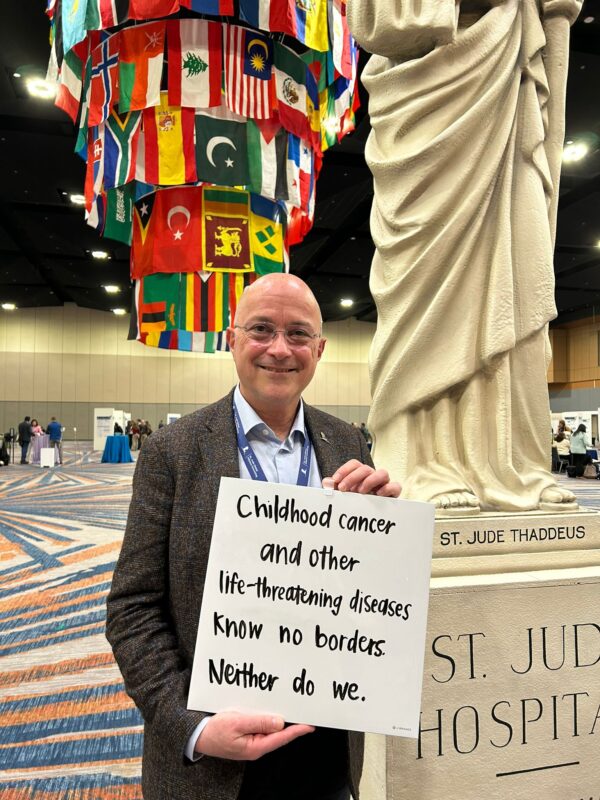
Carlos Rodriguez-Galindo at St. Jude Global Convening 2024. Photography by one of the participants.
“The Leader They Need You to Be”
When asked why people love working with him, Dr. Rodriguez-Galindo chuckles softly.
“I don’t know if they do. I really don’t know,” he says with genuine humility.
“I try to be honest and genuine. I think that’s important as a leader, as a person. There’s a tip about leadership that I try to follow: You want to make sure you’re the person you wanted to be—the person you envisioned yourself becoming at that point in your life, your career, your month, even that day.”
He pauses thoughtfully before adding: “But that’s only part of it. You also need to be the person that the people around you need you to be. You have to combine both. It’s not indecisiveness; it’s awareness. You identify what people need from you—whether it’s encouragement, a solution, a response, a plan—and then you meet that need.”
For Dr. Rodriguez-Galindo, the balance between who you want to be and what others need from you is at the heart of true leadership.
“Sometimes we forget that second part. But if you can combine the two, I think you can become a better leader and a better human being.”
“Success? It’s Not About Me”
Dr. Rodriguez-Galindo is quick to dismiss any praise for his own success.
“I don’t see myself as successful,” he says plainly. “Yes, you can look at things academically, professionally, and say that I’ve done well. But I never prioritized personal success over anything else in my life.”
He explains further. “I do not want to be successful for the sake of being successful. That has never been my goal. I think that mindset has helped me stay grounded.”
For Carlos Rodriguez-Galindo, success isn’t about personal achievement. It’s about something far greater: the patients, the families, and the colleagues who share the mission of curing childhood cancer.
“The Mentors Who Shaped Me”
Reflecting on the people who influenced his career, Dr. Rodriguez-Galindo humbly credits many.
“I’ve been very fortunate to have so many mentors,” he says. “There’s so much to learn from everyone. If you pay attention and listen, you can learn something valuable from almost anyone.”
Among those who guided him early on was Professor Ortega in Barcelona. “He helped me a lot when I was trying to decide on pediatric oncology,” he recalls.
Later, during his time at St. Jude, Dr. Pratt and Victor Santana became important figures in his life.
“Dr. Pratt was a great mentor. Victor Santana, who is still a leader here at St. Jude, has also been a guide to me. I think I’ve been able to take something from each of them—their advice, their example—and build my own path.”
“My Role Models: The People Who Raised Me”
When asked about his role models, Dr. Rodriguez-Galindo’s answer comes quickly, and it is deeply personal.
“It’s my family. My parents.”
He explains, “Both of them have passed away, but I still think about them every day. It’s like I’m a child again, coming home to make them proud. I look at my life and think, ‘I did well in school. Look at what I achieved.’ But really, it’s because I wanted to be like them.”
For Dr. Rodriguez-Galindo, his parents are the measure of human and professional excellence.
“They were the ones I grew up following, and they still inspire me to this day.”
“Work-Life Balance? It’s Life”
The concept of work-life balance elicits a thoughtful pause.
“Probably not,” he admits. “Not as much as I should. The problem is, I love what I do so much that I don’t see the work. It’s life.”
He adds with a small smile, “I could probably balance things better. But that would mean doing less of what I love, which is the work itself.”
By traditional standards, his work-life balance may not be perfect. But for Dr. Rodriguez-Galindo, it’s a life of purpose.
“The Books That Teach Us About Life”
For someone who once devoured 2,000-page textbooks, Dr. Rodriguez-Galindo’s love for literature remains strong. When asked to recommend books, he shares an eclectic mix of authors who shaped his worldview.
“I love the traditional Russian writers, like Dostoevsky and Tolstoy. Anna Karenina, for example, is one of the most beautiful love stories ever written.”
He mentions American authors like William Faulkner, whose work he describes as challenging but rewarding. “It’s a profound analysis of the South, and Faulkner created a new language that influenced writers around the world.”
Other favorites include Philip Roth, Cormac McCarthy, and Spanish authors like Javier Marias.
“But if there’s one book everyone should read, it’s Don Quixote by Cervantes,” he says emphatically. “It’s a book that teaches you about life.
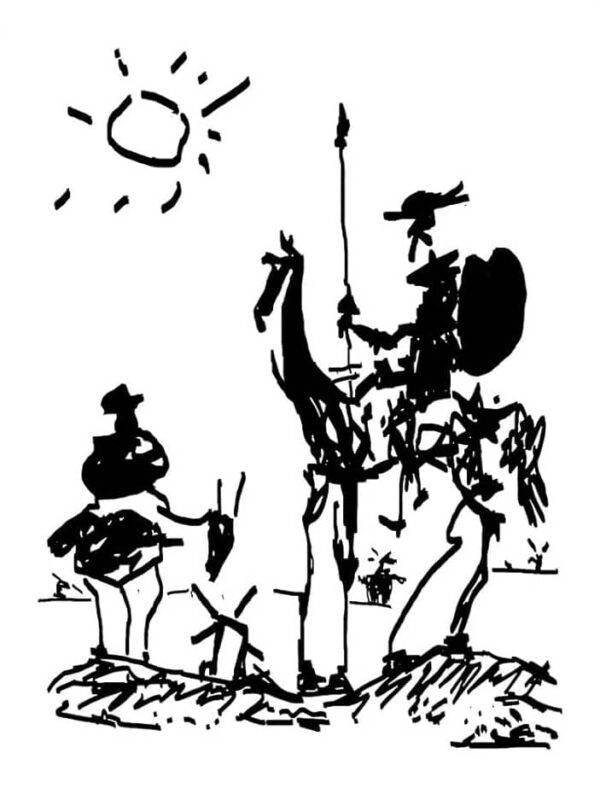
Don Quixote, 1955 sketch by Pablo Picasso
It’s About the People Who Change the World
As our conversation drew to a close, Dr. Carlos Rodriguez-Galindo offered a simple yet profound reflection, one that captured the essence of his career and vision for the future:
“The people that change the world are, oftentimes, not the ones that people recognize. It’s so true. And so I would encourage you to go for the individual stories. People that really have made it in history could be one of those, for example. Yes, of course. There are so many examples of this. And that’s what I think is part of the secret of success. It’s just trying to identify what people do. Because at the end of the day, what we do is because of the people.”
This sentiment encapsulates Dr. Rodriguez-Galindo’s entire philosophy: medicine is about people. It is about the patients who inspire us to keep going, the families who teach us resilience, and the providers and researchers who work tirelessly to heal. It’s about the overlooked individuals in small towns, in resource-limited settings, or in bustling hospitals who quietly dedicate themselves to changing lives.
From his humble beginnings in a small Spanish town to leading the charge in global pediatric oncology, Dr. Rodriguez-Galindo’s journey reminds us that true success is not measured in accolades or recognition, but in the lives we touch and the progress we achieve together.
The work of curing children with cancer and catastrophic diseases is immense and ongoing, but his unwavering belief in collaboration, humility, and relentless action offers hope to the world. As he often says, “Dream big, but put the practice.” And through his work at St. Jude Global, he proves that even the biggest dreams can start with the smallest steps—steps guided by people, for people.
In the end, it’s not just about curing cancer. It’s about ensuring that no child, no family, and no doctor feels alone on their journey. Because, as Dr. Rodriguez-Galindo reminds us, “At the end of the day, what we do is because of the people.”
